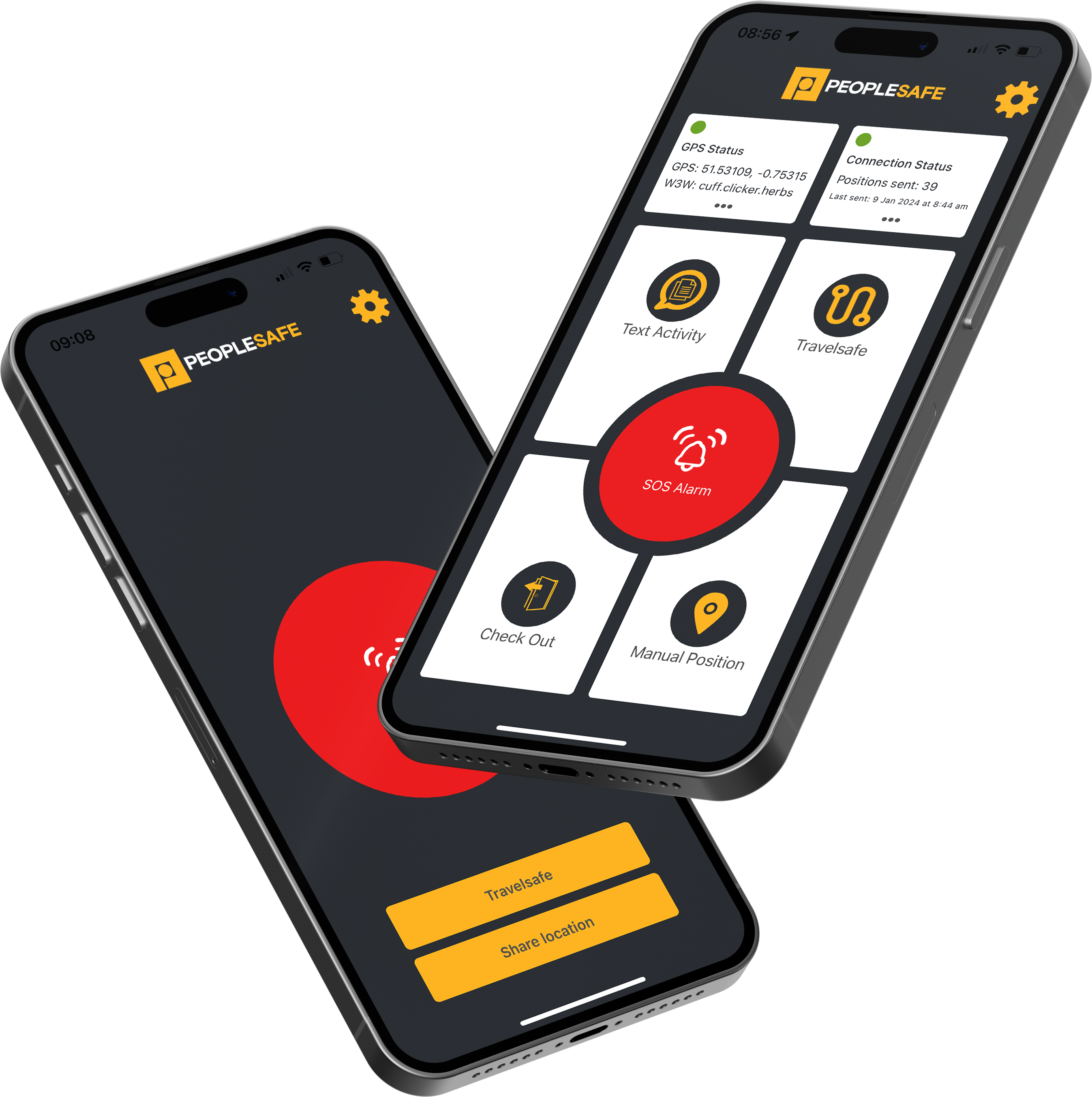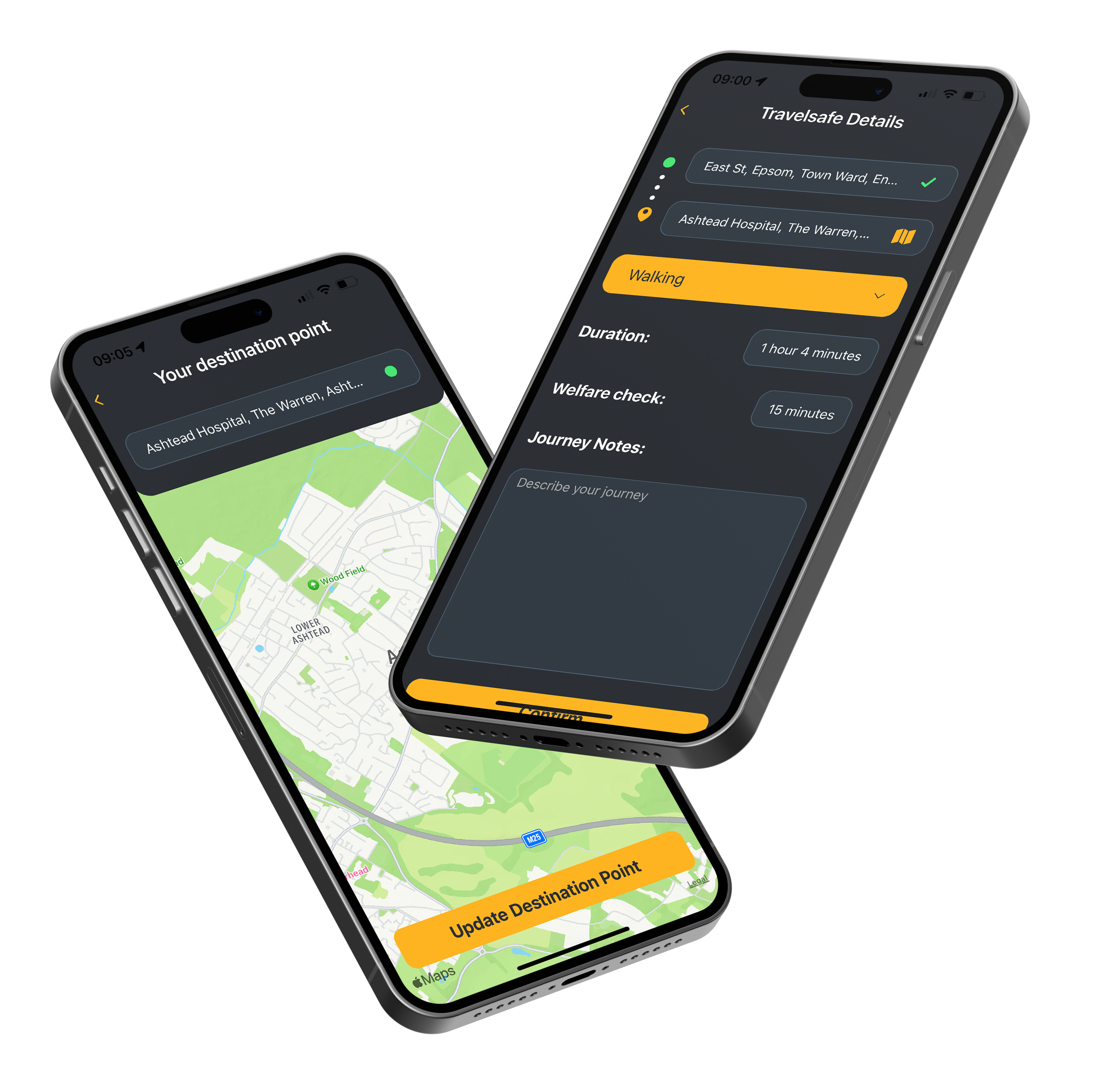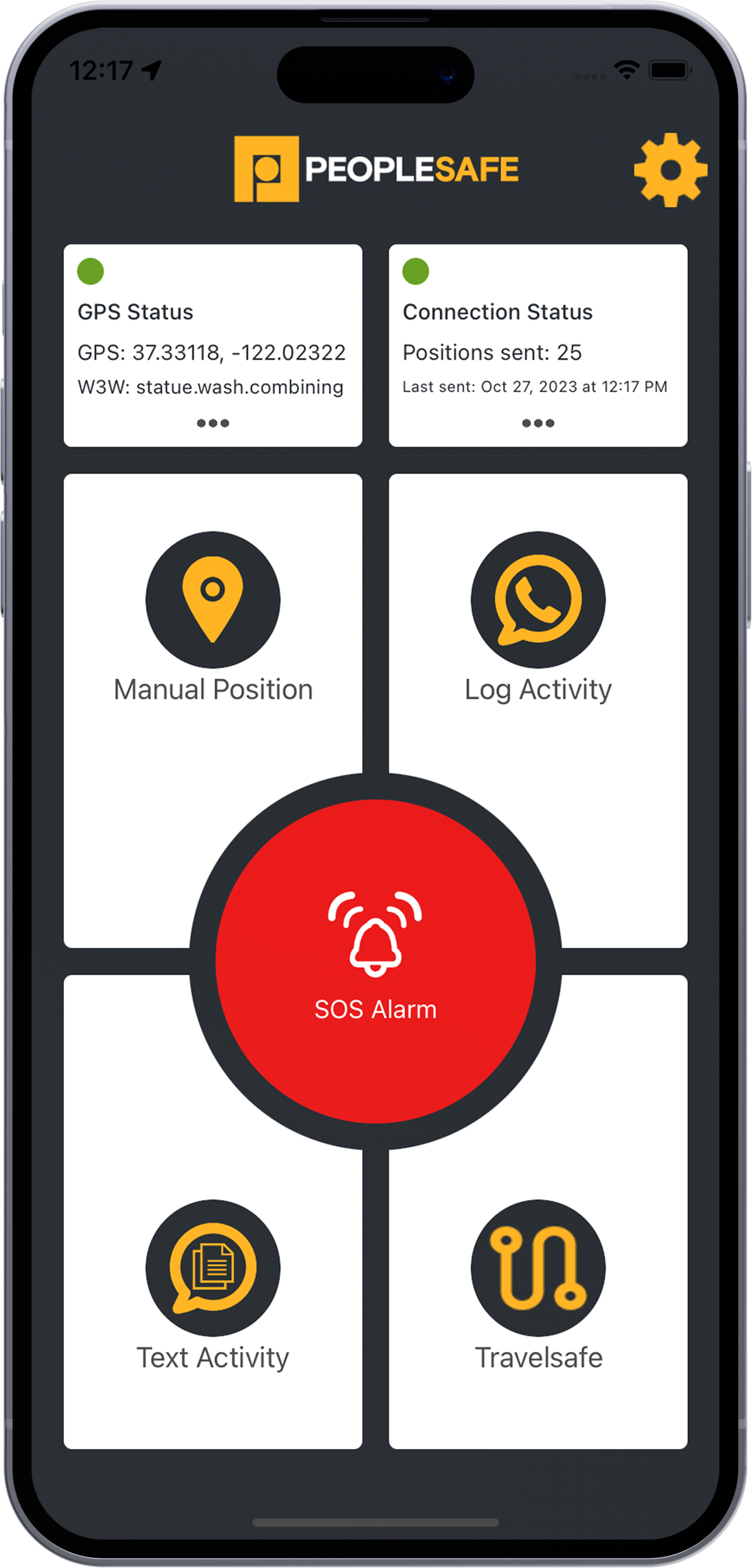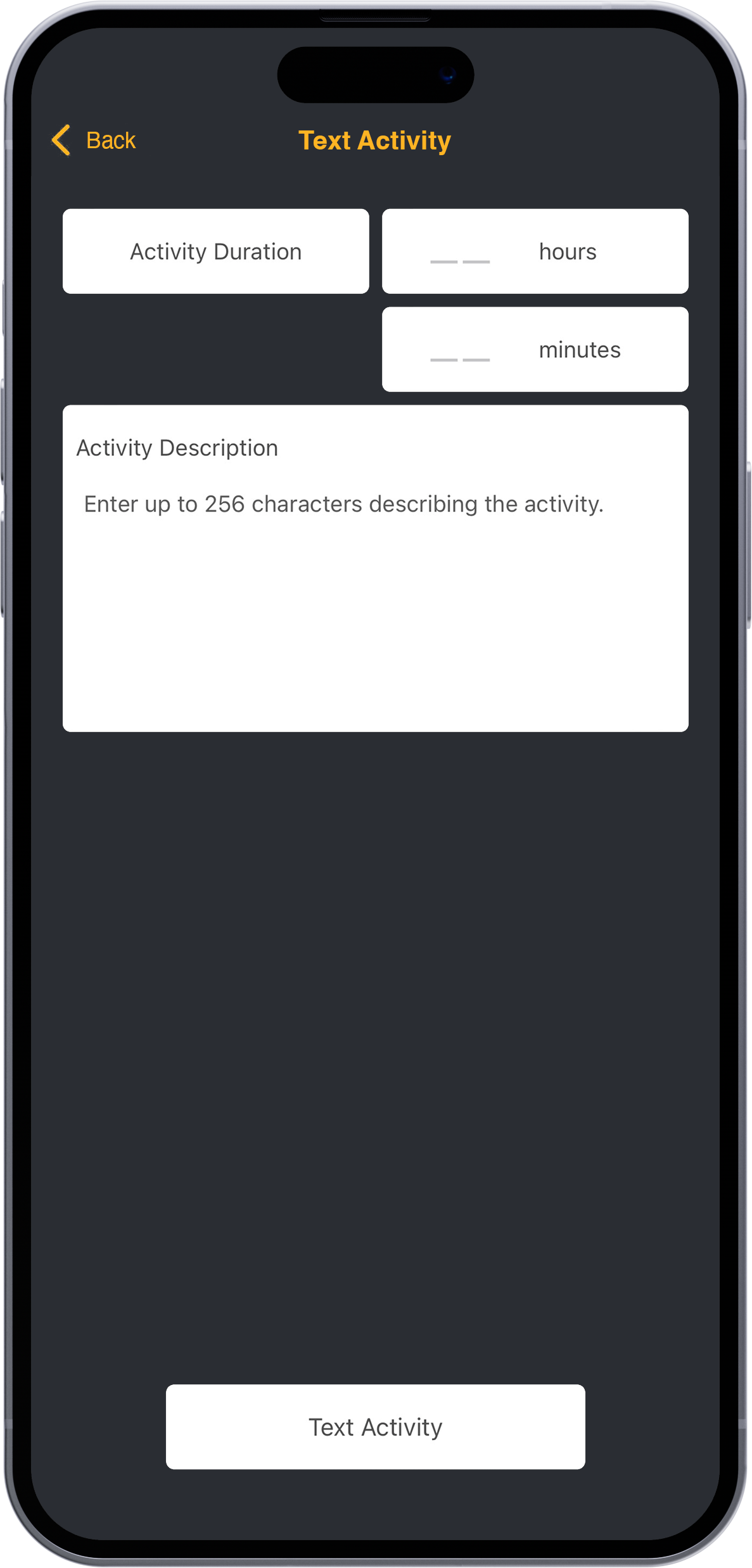 For lone workers, the risk to personal safety is very real – whether visiting people’s homes, working out of regular office hours, travelling, working remotely, or operating solo from a business premises.
For lone workers, the risk to personal safety is very real – whether visiting people’s homes, working out of regular office hours, travelling, working remotely, or operating solo from a business premises.
Employers have a duty of care towards their staff to provide a safe environment for them to work in.
Many occupations require employees to work independently and without the safety net of an immediately accessible wider team. So, how can employers ensure that personal risk is minimalised and that in the event of an emergency staff are adequately protected 24/7?
Lone worker apps
Lone worker alarms are dedicated to protecting employees working alone. The main function of this tech is to provide lone workers with the ability to raise an SOS alarm to an accredited Alarm Receiving Centre (ARC) which is available round-the-clock to manage any incidents.
The technology has all the necessary features to give lone workers the confidence to work safely whoever they’re meeting, wherever they are, whatever they’re doing. It also enables managers to be informed of their team’s location when an incident occurs.
Lone working apps, as opposed to devices, are increasing in popularity. The share of workers using app-based solutions is growing at 19% annually with this trend expected to rise significantly over the coming years.
Apps offer a cost-effective alternative to dedicated devices with no hardware costs, just the license subscription fee with the lone worker service provider. They can be installed on most smartphones and be easily updated when a new version or feature is released. Large organisations can easily roll apps out at scale to offer protection to people quickly.
 Fall detection
Fall detection
Fall detection provides additional backup for employees who may be at risk of slips, trips or falls. When the handset detects a change in orientation followed by a period of non-movement, an SOS alarm will automatically be raised.
This feature ensures that staff can still receive help even if they fall and become incapable of manually raising an alarm or calling for help.
Lone worker apps use the phone’s built-in GPS capabilities to provide location monitoring which can be accessed when an alarm is raised. Peoplesafe’s service also integrates with What3Words – technology widely used by the emergency services – pinpointing the worker’s location within 5m². This level of detail is crucial in the event of an alarm being raised, particularly in large rural areas.
Security and welfare tools
Workers can check-in and -out of their working day using their lone worker app which will feed data into a management portal so you can see who has started work and returned home safely. Managers will automatically receive reports enabling you to streamline operations, reduce administrative burdens, and optimise resource allocation.
Timed activities can be set for specific tasks, for example before an appointment, with scheduled welfare checks throughout. If an employee were to become ill, injured or threatened while working, and unable to raise an alarm manually, these provisions facilitate timely detection of the situation, allowing you to ensure the safety of those working alone.
 Travelsafe
Travelsafe
For a growing number of employees, personal safety is not limited to working hours. With 75% of employees worrying about personal safety when travelling for business and 69% concerned about personal safety on the commute*, Travelsafe is exclusively available on the Peoplesafe app and has been designed to offer 24/7 protection on every journey.
Whether commuting to or from work, travelling for business, or socialising with friends, Travelsafe provides protection and reassurance at all times, through a professional emergency response control centre operated by expertly trained alarm handlers who can bypass 999 to get help in an emergency in just 4 minutes, on average.
Similar to a journey planner app, employees confirm their starting point, input their destination, and select how they’re travelling. Travelsafe will then calculate an estimated journey time and set an automated alarm for when they should reach their destination. Additional information can also be provided, such as the registration plate of a taxi, information about other passengers or route specifics.
The option to schedule check-ins throughout the journey is also available for added peace of mind. These notifications ask users to confirm that they’re ok and, if at any point, the response is ‘no,’ or if there’s a failure to respond to welfare checks, subsequent prompts or follow-up calls, an SOS alarm is immediately raised to the control centre.
With all problem-free journeys, the timer is cancelled as soon as the employee is within 10 metres of their destination. However, if the journey is taking longer than expected, prompts are sent to extend the timer. Should the journey time expire, and a user fails to reach their destination or respond to prompts and calls from the app, an SOS alarm will be raised instantly, with real-time details of their journey shared with the control centre.
Unlike free personal safety apps, this solution is monitored by trained call handlers, not family and friends. Moreover, with automated welfare checks and alarms handled by Peoplesafe’s in-house ARC, this new technology makes it possible to proactively mitigate risk with no strain on human resources – allowing businesses to easily provide 24/7 protection to the people who make their business tick.
 Safety technology for all employees
Safety technology for all employees
A company that provides this layer of personal security demonstrates the value that they place on their workers. Often, it is only those at the highest risk that are given technology solutions to protect their safety; however, investing in a service that benefits all employees demonstrates a company dedicated to safeguarding staff at all times and strengthens brand reputation.
In addition to providing peace of mind, personal safety technology offers wider-reaching benefits. Forward-looking employers are seeing the connection between employee peace of mind and overall job satisfaction and performance. Indeed, nearly half (48%) of employees would see their employer in a better light if they were provided with a personal safety solution, thus enhancing brand reputation.
When it comes to employer duty of care, the reasonableness of a protective measure can be determined by considering the potential risk of harm to the employee compared to the cost and practicality of putting the safety measure in place. With new advancements in technology, it’s becoming easier than ever to implement safety platforms and seamlessly imbed them into business ‘as usual’ activity. This allows companies to proactively manage the risks to their people instead of being reactive in the aftermath of an incident.
Naz Dossa, Peoplesafe CEO, and BSIA Chair of the Lone Worker Group, comments: “Nearly a third of workers believe their employer could be doing more to protect them and technology provides a low-cost safety solution that can be quickly and easily implemented, thus removing the barrier for businesses to step up to protect their workforce. Providing greater protection and peace of mind for staff, employers can positively impact workforce satisfaction, and further bolster organisational perception and output.”


